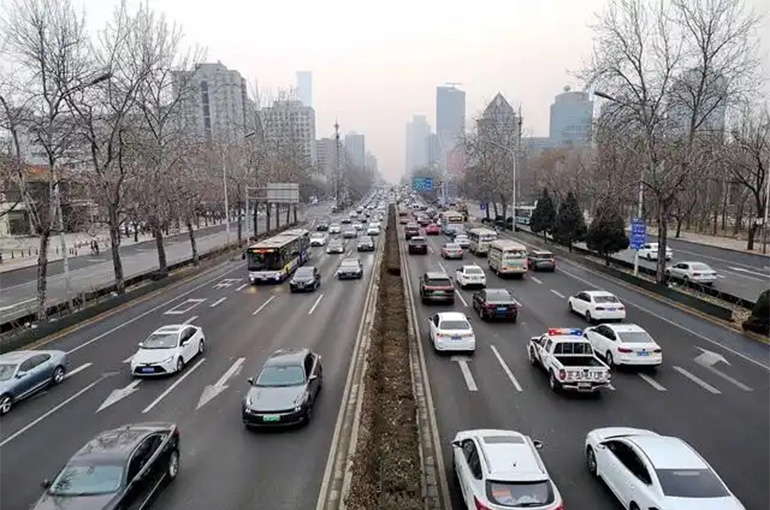 China to Speed Up Work on National VII Vehicle Emission Standards
China to Speed Up Work on National VII Vehicle Emission Standards(Yicai) Feb. 24 -- China plans to accelerate development of the VII Vehicle Emission Standards this year, an official said, with cars having become the main source of pollution in many large cities.
China’s air pollution prevention and control has undergone profound changes since the start of 14th Five-Year Plan in 2021, China Central Television News quoted Li Tianwei, director of the Department of Atmospheric Environment of the Ministry of Ecology and Environment, as saying today.
According to a Shanghai Auto News report last April that cited industry experts, a draft of the China VII standards is expected to be issued this year to solicit public consultation, and they will be officially released next year.
Pollution from sources such as factories has fallen, with nitrogen oxides and volatile organic compounds now accounting for about 60 percent and 24 percent of the national total, respectively, Li said.
But emissions from mobile sources -- mainly cars, but also ships, diesel trains, and non-road mobile machinery -- now exceeds 9 million tons. In densely populated cities such as Beijing, Shanghai, Jinan, Hangzhou, Guangzhou, Shenzhen, and Chengdu, mobile sources have become the primary cause of pollutant emissions, Li noted.
To improve air quality, China has committed to regulating diesel trucks, and has taken nearly 50 million high-emission vehicles off the road. New energy vehicles now account for more than 40 percent of sales nationwide, ranking first globally. NEVs made up 40.6 percent of vehicle sales in the country last month, according to the China Association of Automobile Manufacturers. Also, vehicles that meet China V and above emission standards account for 53 percent of the total.
From 2000 to 2024, China’s emission standards were changed five times, with China VI-B being fully implemented at the end of 2023. As of the end of last June, there were 440 million motor vehicles in use across the country, including 345 million cars and 24.72 million NEVs.
An auto industry analyst told Yicai that the China VII standards may lead to challenges such as higher costs in vehicle manufacturing and restrictions on usage. It will also be a severe test for producers, who have just adapted to the China VI-B standards.
Editor: Tom Litting